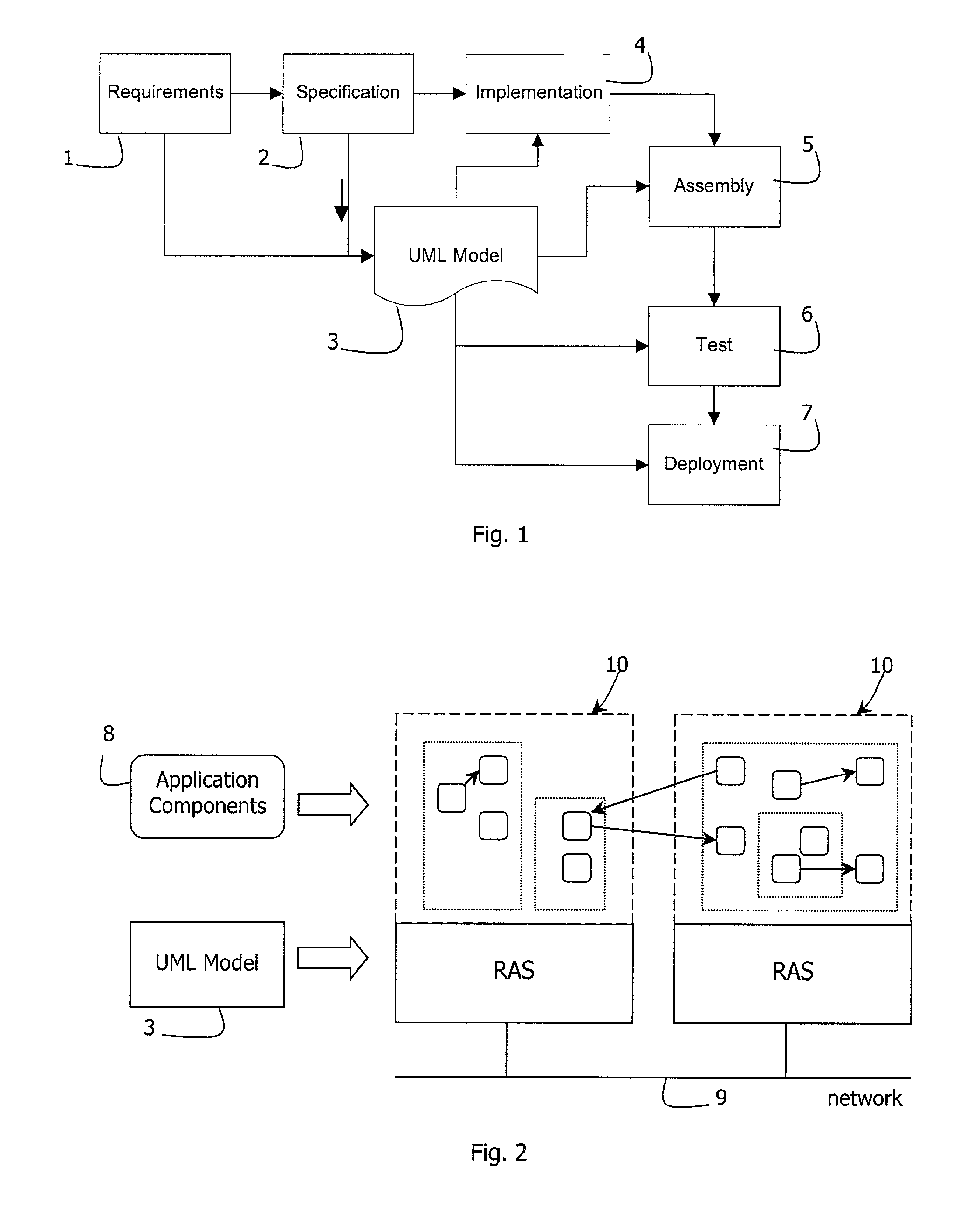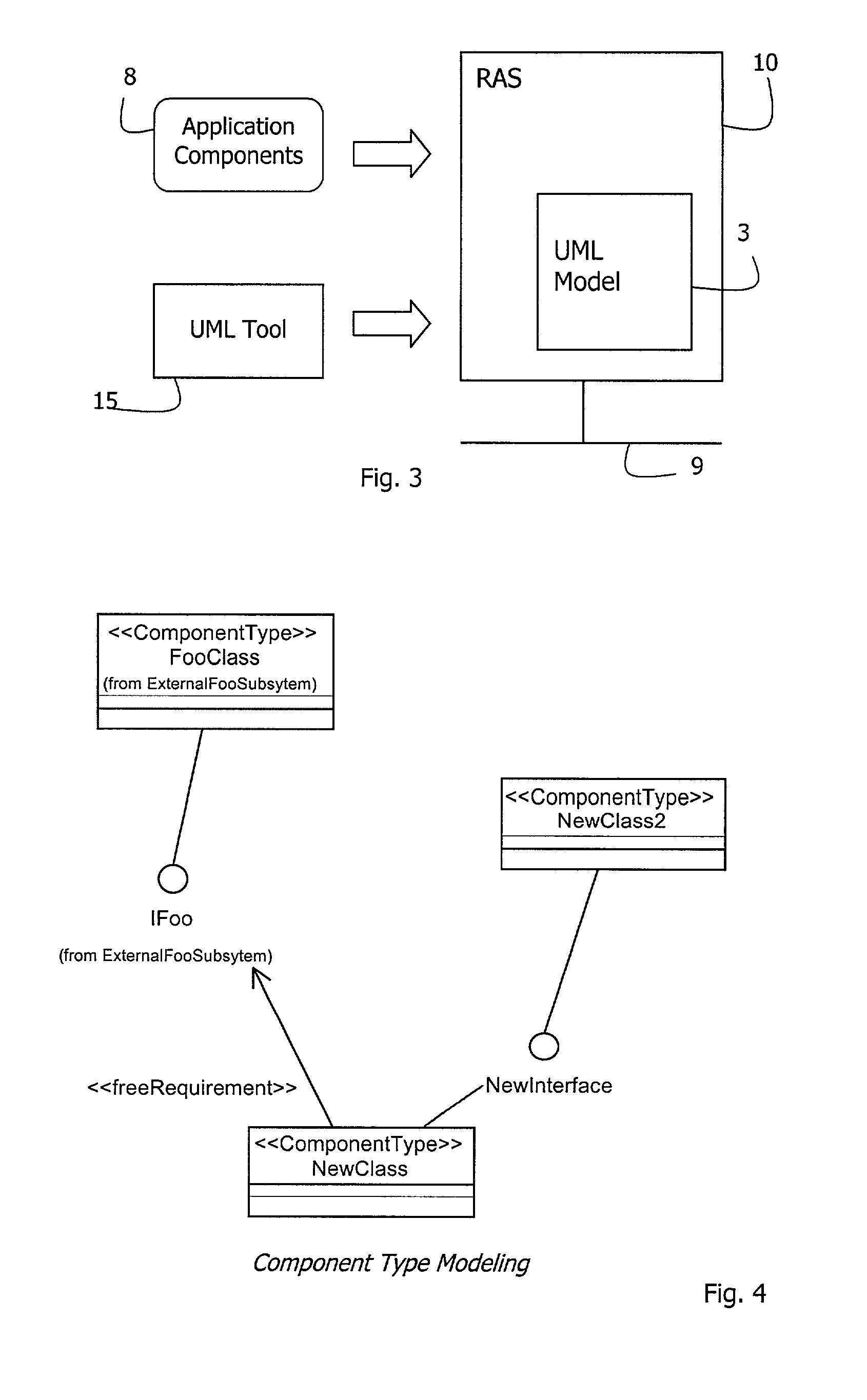Software development process
a software development and process technology, applied in the field of software development process, can solve the problems of hardening linkage, difficult manipulation of locking modules together, and delivering flexible software, and achieve the effect of improving flexibility
- Summary
- Abstract
- Description
- Claims
- Application Information
AI Technical Summary
Benefits of technology
Problems solved by technology
Method used
Image
Examples
Embodiment Construction
[0075] FIG. 1 illustrates a development process as a set of development phases. In an iterative development process it may be assumed that these phases will occur in parallel as iterations progress. Software development begins with a requirements phase 1, in which the system's business requirements are defined, leading to a series of Unified Modelling Language (UML) use cases and other supporting documentation. In a second phase, specification 2, the system architecture is defined. Its output is a UML model 3 which models component types, subsystems, and the overall architecture of the system, in terms of dependencies between components. An implementation phase 4 generates components to be used in the system. The UML model is a design model which drives the implementation by specifying the required component types. An assembly phase 5 binds the components to form the required software system. Testing 6 and deployment 7 are the final stages in the development process. The invention i...
PUM
 Login to View More
Login to View More Abstract
Description
Claims
Application Information
 Login to View More
Login to View More - R&D
- Intellectual Property
- Life Sciences
- Materials
- Tech Scout
- Unparalleled Data Quality
- Higher Quality Content
- 60% Fewer Hallucinations
Browse by: Latest US Patents, China's latest patents, Technical Efficacy Thesaurus, Application Domain, Technology Topic, Popular Technical Reports.
© 2025 PatSnap. All rights reserved.Legal|Privacy policy|Modern Slavery Act Transparency Statement|Sitemap|About US| Contact US: help@patsnap.com



